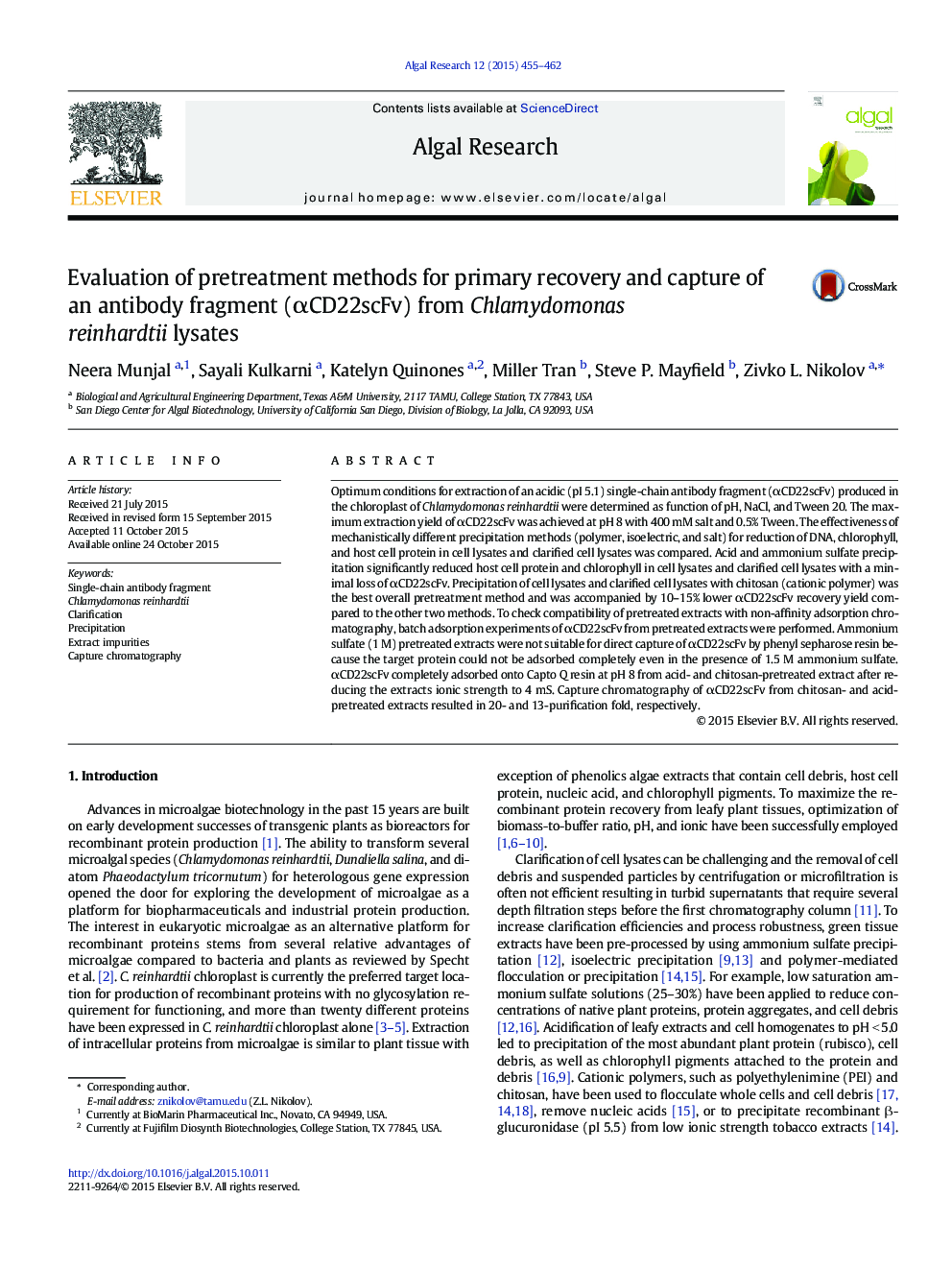| Article ID | Journal | Published Year | Pages | File Type |
|---|---|---|---|---|
| 8087951 | Algal Research | 2015 | 8 Pages |
Abstract
Optimum conditions for extraction of an acidic (pI 5.1) single-chain antibody fragment (αCD22scFv) produced in the chloroplast of Chlamydomonas reinhardtii were determined as function of pH, NaCl, and Tween 20. The maximum extraction yield of αCD22scFv was achieved at pH 8 with 400 mM salt and 0.5% Tween. The effectiveness of mechanistically different precipitation methods (polymer, isoelectric, and salt) for reduction of DNA, chlorophyll, and host cell protein in cell lysates and clarified cell lysates was compared. Acid and ammonium sulfate precipitation significantly reduced host cell protein and chlorophyll in cell lysates and clarified cell lysates with a minimal loss of αCD22scFv. Precipitation of cell lysates and clarified cell lysates with chitosan (cationic polymer) was the best overall pretreatment method and was accompanied by 10-15% lower αCD22scFv recovery yield compared to the other two methods. To check compatibility of pretreated extracts with non-affinity adsorption chromatography, batch adsorption experiments of αCD22scFv from pretreated extracts were performed. Ammonium sulfate (1 M) pretreated extracts were not suitable for direct capture of αCD22scFv by phenyl sepharose resin because the target protein could not be adsorbed completely even in the presence of 1.5 M ammonium sulfate. αCD22scFv completely adsorbed onto Capto Q resin at pH 8 from acid- and chitosan-pretreated extract after reducing the extracts ionic strength to 4 mS. Capture chromatography of αCD22scFv from chitosan- and acid-pretreated extracts resulted in 20- and 13-purification fold, respectively.
Related Topics
Physical Sciences and Engineering
Energy
Renewable Energy, Sustainability and the Environment
Authors
Neera Munjal, Sayali Kulkarni, Katelyn Quinones, Miller Tran, Steve P. Mayfield, Zivko L. Nikolov,
